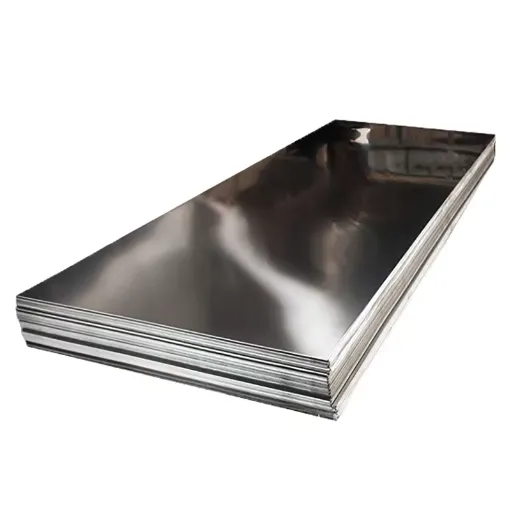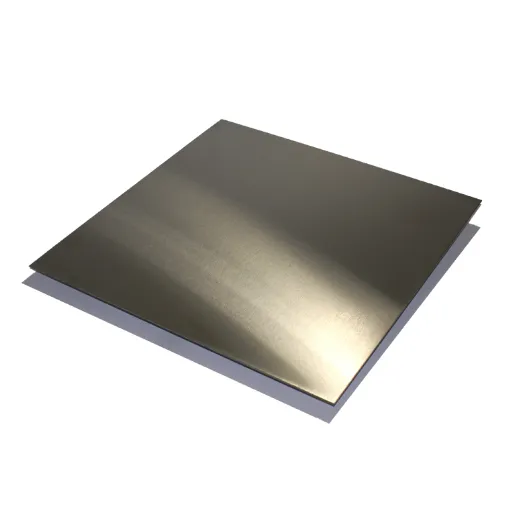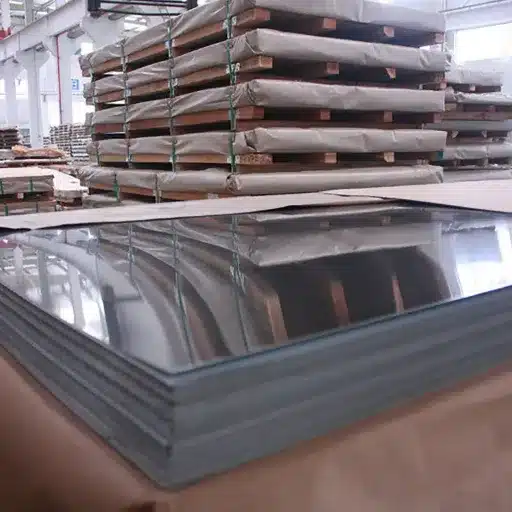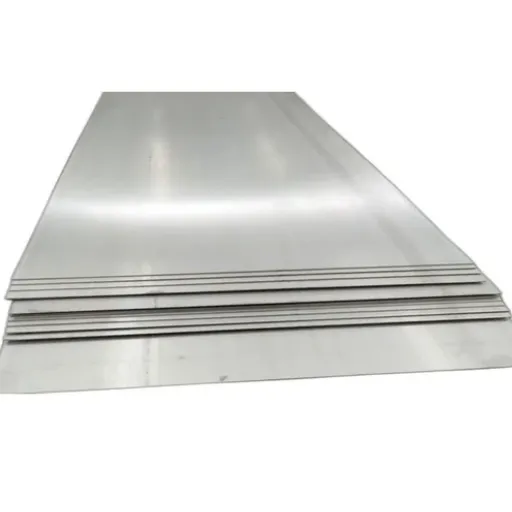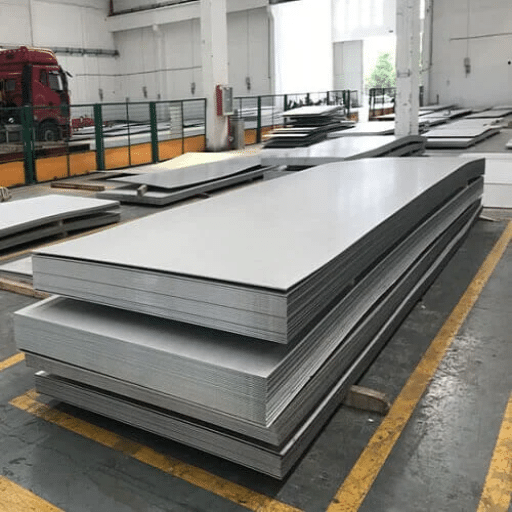Steel pipes are crucial to numerous industries, including construction, infrastructure development, energy, and manufacturing. Among the various classifications of pipes, Schedule 80 pipes should be given prominence due to their immense rigidity and strength, as well as their application in high-pressure situations. This article will provide a detailed examination of the key dimensions and specifications of Schedule 80 steel pipes, explaining their characteristics, applications, and why they are the primary choice in harsher environments. Engineers, contractors, and anybody who wants to understand steel pipe standards better will consider this exhaustive article a valuable technical resource. Stay tuned as we simplify everything about Schedule 80 steel pipes and their applications in today’s industries.
Introduction to Schedule 80 Pipes
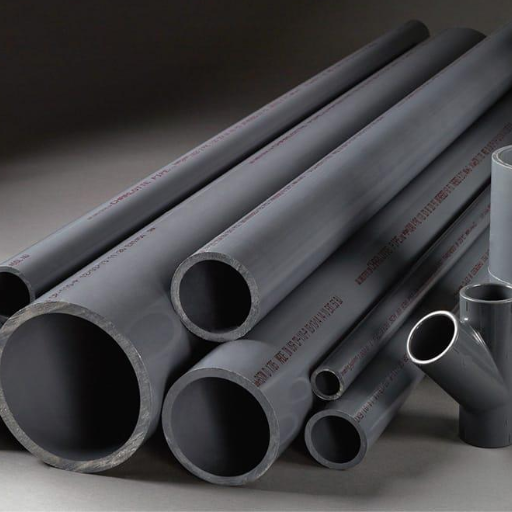
Schedule 80 pipes comprise a category of steel pipes distinguished by thicker walls than Schedule 40 pipes. The thicker walls give way to added strength and durability, hence fitting applications of high pressure and temperature. Depending on their different names, these pipes also find applications in chemical processing, construction, and oil and gas industries, where structural integrity demands are high. Their stringent standardization makes them a reliable entity for performance and all applicability requirements.
What are Schedule 80 Pipes?
Schedule 80 pipes are pipes with a wall thicker than Schedule 40 types, hence designed for applications that require higher pressure tolerance and durability. From PVC, steel, stainless steel, or CPVC, the manufacturer depends on the use and environment. The thickness of Schedule 80 pipe walls enables them to resist higher internal pressures, thereby making them ideal for handling systems carrying aggressive fluids, subjected to high temperatures, or corrosive environments as are generally found in industrial and commercial settings.
Schedule 80 pipes stand by dimensions and pressure rating standards as per ASTM and ANSI specifications, to cast a wider industry span, such as oil and gas, chemical production, water treatment, and construction industries. For PVC pipes, Schedule 80 pipes are rated up to 280 psi, subject to diameter and temperature of operation. Their solid design minimizes the chance of accidental failure during dynamic loading or variation of pressure, making them vital for key operations.
Why Schedule 80 Pipes are Widely Used
Schedule 80 PVC pipes, because of their higher mechanical properties and adaptability, became very common. Their thicker walls in comparison to those of Schedule 40 enable them to resist higher internal pressures; hence, these pipes are used for very high-stress applications such as industrial fluid handling and pressurized gas systems. They are chemically resistant and therefore will remain for a longer time, performing better than Schedule 40 under exposure to acids, bases, or solvents in industrial or chemical processing environments.
Their temperature stability is also important, since the pipes need to retain their structural integrity when subjected to variable temperatures. Schedule 80 pipes are thus an excellent choice for applications that demand continuous performance under either heating or cooling. The ease of installation likewise keeps down the cost of installation and operational maintenance, thus making the pipes extremely cost-effective for massive use.
Also very important to the industries for Schedule 80 PVC pipes is their compliance with various regulatory standards, such as ASTM and NSF International standards, which guarantee safety and reliability in potable water systems and other critical applications. Thanks to its sheer corrosive resistance quality, allied with versatility and adherence to regulatory standards, Schedule 80 pipes presently form an indispensable part of every lifeline of modern infrastructure and industrial operation.
Dimensions and Specifications of Schedule 80 Pipes
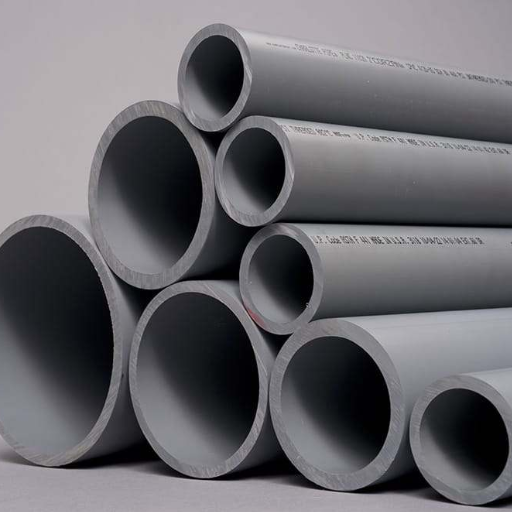
Schedule 80 PVC pipes were developed for high-pressure applications higher than those at which Schedule 40 pipes are used. The extra thickness gives them an added advantage of durability and mechanical strength. Their key dimensions include:
- Pipe Sizes: Common nominal diameters range from 1/8 inch to 24 inches.
- Wall Thickness: The wall thickness should be increased with the diameter of the pipe so that all sizes have the same strength. The wall thickness for 1-inch Schedule 80 PVC pipe would be about 0.179 inches.
- Pressure Rating: Depending on size and temperature, usually ranging from 630 psi for the small diameter to lower psi for the large diameter and high temperature.
- Standards Compliance: Schedule 80 PVC pipes meet ASTM D1785 and are certified by NSF for potable water use.
These specifications make them ideal for industrial, commercial, and residential applications requiring dependable performance under demanding conditions.
Understanding Pipe Dimensions and Sizes
Two critical parameters classify pipe specifications: nominal pipe size (NPS) and schedule number. NPS is the approximate measure of the internal diameter of the pipe, and the schedule number dictates the wall thickness. Thus, the combination of the two parameters gives the internal and external diameter, which is the determining factor, either on the flow rates of the medium to be conveyed or pressure capacity, and allows for a precise fit of one pipe to another. For instance, Schedule 80 PVC pipes with 1-inch nominal size with 1.315-inch typical outer diameters may exhibit far lower inner diameters, because of thicker walls than those of Schedule 40 with the same nominal size.
Dimensional information is standardized by various norms, including the American National Standards Institute (ANSI), to maintain clear ,effective use and compatibility. Moreover, manufacturers publish charts and matrices with detailed information relating to nominal sizes, schedule thicknesses, and pressure ratings per allowable engineering and technical parameters. Additional factors to consider in pipe sizing for system design include fluid type, working pressure, temperature range, and external load to assure the best performance and reliability, which consequently reflects the adjustment needed to meet the demands of the intended application.
Pressure Ratings of Schedule 80 Steel Pipes
Schedule 80 steel pipes with thick walls are designed to resist higher pressures than Schedule 40 steel pipes. The pressure of these pipes varies greatly with the grade of material, diameter of pipe, wall thickness, working temperature, and so on. For example, a 1-inch Schedule 80 steel pipe of ASTM A53 Grade B material will usually have a working pressure of about 2010 psi at normal room temperature (around 73°F). But at higher temperatures, the pressure ratings tend to drop because of the performance limitations of the materials used. To determine the exact pressure thresholds, engineers use standard formulas, like Barlow’s formula, which is internal pressure as a function of pipe dimensions and the strength of materials. This makes sure that pipes used all over in applications such as hydraulic systems, high-pressure gas lines, and industrial plants are safe and operational. The systems using Schedule 80 steel pipes become even more reliable and safe when further strengthened by other standards, such as ASME B31.3 for process piping.
Material Composition and Variants
Schedule 80 steel pipes are essentially made of carbon steel to impart an acceptable balance of strength, durability, and machinability. This usually denotes a composition of carbon, manganese, phosphorus, sulfur, and silicon, all of which contribute to the mechanical properties and performance of the material. Depending on application requirements, variants of Schedule 80 pipes may be alloyed with chromium or molybdenum for applications requiring enhanced corrosion and high-temperature resistance. These dimensions allow the pipes to be used in crucial applications of chemical processing plants, power generation plants, and degenerated industrial plants. ASTM compliances like ASTM A53 or ASTM A106 also ensure the conformity of carbon steel pipes to the standard quality and performance regulations, irrespective of grade and configuration.
Common Applications of Schedule 80 Pipes
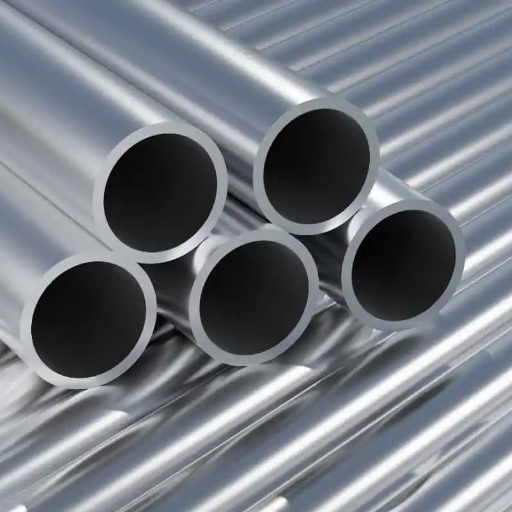
Schedule 80 pipes are well-known across the industries demanding high-pressure tolerance and reliability:
- Chemical Processing: For carrying hazardous chemicals, these pipes find preference due to their strength and corrosion resistance.
- Water Distribution Systems: Having the ability to endure high pressures, these pipes find use in water distribution systems, guaranteeing steady flow and almost negligible risk of pipe failure.
- Oil and Gas Industry: In pipeline systems, their capability of sustaining both high pressures and temperatures is exceedingly instrumental.
- Industrial Manufacturing: Provides strong piping systems that bear operational stress in machinery and equipment.
- Irrigation Systems: For strength and longevity, irrigation networks are served both agriculturally and industrially.
Usage in Plumbing Systems
Schedule 80 pipes possess the unique properties of higher wall thickness, thus providing higher strength and pressure-handling qualities over Schedule 40 pipes. These pipes provide the best service in high-pressure water supply lines, chemical transport, and wastewater management application areas. Their extra strength reduces the case of failures, hence, cutting system maintenance expenses and downtime. They are also corrosion-resistant and hence are good for carrying potable water or aggressive fluids. Technological advancement in materials has, therefore, further improved the performance of Schedule 80 pipes regarding thermo-resistance and expected life span, even in tough working conditions. All these properties cement their place as dependable pipes for residential and industrial plumbing systems.
Industrial Applications
- Chemical Processing
- Schedule 80 pipes find use in chemical processing plants for the conveyance of corrosive chemicals, acids, and solvents. The pipes ensure that substances are transported safely and efficiently, while chimney resistance protects them from chemical corrosion.
- Water Treatment Facilities
- The pipes are an integral part of water treatment systems for open and mechanized uses concerning treated and untreated water applications.
- Oil and Gas Industry
- Due to their resistance to high pressure and high-temperature variations, Schedule 80 pipes find a location in drilling, refining, and pipeline systems.
- Irrigation Systems
- Schedule 80 pipes are utilized in commercial and agricultural irrigation networks where high-pressure pressure handling and UV degradation resistance are both needed to ensure long-term functionality in outdoor environments.
- Manufacturing Plants
- Schedule 80 pipes are capable of handling compressed air systems, cooling water circulation, and steam transfer across heavy manufacturing.
- Power Generation
- Nuclear and thermal power plants find the use of Schedule 80 pipes in power cooling and waste management systems to be particularly beneficial due to their heat and pressure resistance.
High-Pressure Environments
Schedule 80 pipes are manufactured specifically for heavy pressure, which renders their applications in high-demand industries indispensable. Being thicker than Schedule 40 pipes, these pipes provide more durability against deformation caused by internal pressures. Hydraulic operations and chemical plants are standard applications that need Schedule 80 pipe maintenance for structural integrity under pressure in excess of 1,000 psi. Moreover, Schedule 80 pipe has the ability to withstand fairly high temperatures, which are usually found in high-pressure jobs. The pipe construction materials, CPVC and steel, go a long way in protecting them from cracking, leaking, or worse, giving way very early in a long-term operational period.
Comparison with Other Pipe Schedules
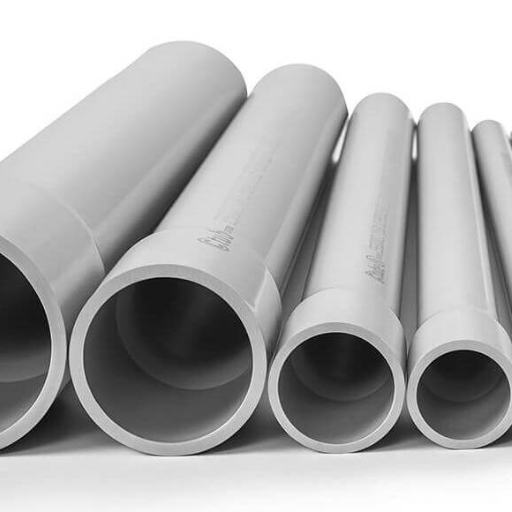
Differences Between Schedule 40 and Schedule 80
|
Parameter |
Schedule 40 |
Schedule 80 |
|---|---|---|
|
Wall Thickness |
Thinner walls |
Thicker walls |
|
Weight |
Lighter |
Heavier |
|
Pressure Tolerance |
Lower pressure capacity |
Higher pressure capacity |
|
Cost |
More economical |
More expensive |
|
Temperature Resistance |
Moderate |
Higher |
|
Flow Rate |
Higher due to larger inner diameter |
Lower due to smaller inner diameter |
|
Application Suitability |
Low to moderate pressure systems |
High-pressure and industrial systems |
|
Durability |
Less durable |
More durable |
|
Availability |
Widely available |
Widely available but slightly less common |
|
Common Use |
Residential and commercial applications |
Industrial and chemical applications |
Performance and Strength Comparisons
Several important points come into view while studying the behavior and strength characteristics of materials in applications. Firstly, come the mechanical characteristics, pressure ratings, and conditions of the environment in which they could be applied. For example, materials meant for high-pressure and industrial systems have a much higher value for tensile strength and performance than those used for general household use. All these materials undergo rigorous tests, indicating that they could stand extreme variation in temperature, corrosive ingredients, and operational stresses for a long time.
The flow capacity and thermal resistivity offered by the materials depend to a great degree upon details of their internal structure and chemistry. Materials with a larger internal diameter are generally considered suitable for higher flow rates, whereas systems with a smaller diameter are preferable in an environment where the level of precision and lower risk of leakage are paramount. These distinctions, therefore, require the selection of materials designed to meet the exact operational demands for possibilities of great performance and endurance.
Cost Considerations
Material and system costs are the deciding factors in their applicability to a particular project. Typically, the more durable substances of higher thermal resistance or of exact engineering have a higher price tag initially. For example, stainless steel and high-performance polymers are more expensive due to their superior properties and the complexity of their manufacture. Many factors related to the supply chain, production in large volumes, and regions of availability may be responsible for creating significant variations in cost. Thus, weigh these costs on the balance against the survival performance of the material, since the costlier alternatives may cover their initial cost in terms of lower maintenance, increased operational life, and better performance in harsh conditions. Decision-makers may consider the price-performance ratio and obtain initial cost savings through discounted operational costs in their selections.
Benefits and Limitations of Schedule 80 Pipes
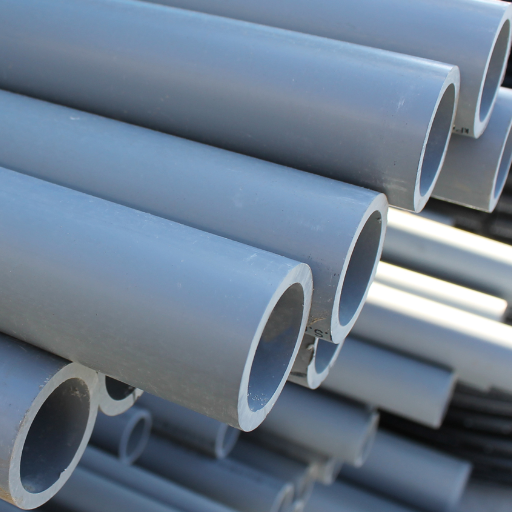
Benefits of Schedule 80 Pipes:
- Higher Pressure Rating: The pipes of schedule 80 are thicker, whereas schedule 40 possesses less thickness; hence, the ability to hold greater internal pressure becomes inherent to schedule 80 and thus finds application in industrial and high-pressure environments.
- Durability: The thicker wall permits more resistance to any mechanical damage and wear, hence providing more trust in harsh environments.
- Temperature Resistance: The pipes perform well in temperature ranges on the higher side, suitable for carrying hot liquids or gases.
- Chemical Compatibility: Schedule 80 pipes usually include PVC or CPVC pipes; these materials have excellent corrosion resistance to a wide array of chemicals.
Limitations of Schedule 80 Pipes:
- Higher Cost: Extra material for wall thickness mechanism boosts the price as compared with Schedule 40.
- Reduced Flow Rate: Thick walls provide low inside diameter that limits the flow rate, depending on the application.
- Weight: The weight of the pipes is severe with more wall thickness, discouraging transport and installation of heavy systems.
- Overdesign Risks: Excess strength of Schedule 80 in applications with low-pressure requirements is simple overdesign, thus loss of efficiency in use and in terms of material.
Durability and Longevity
Schedule 80 piping offers exceptional durability due to its thicker walls and robust construction, making it highly resistant to mechanical damage, impacts, and external stresses. Its material composition also provides superior resistance to corrosion, chemical exposure, and environmental factors such as UV radiation, which is particularly critical in industrial and outdoor installations. Several studies have demonstrated that the pipes retain structural integrity for extended periods of time when used for standard working conditions, including demanding settings of high pressures or aggressive chemicals. This long service life reduces the replacement and maintenance costs, thus improving the cost-effectiveness and reliability of the whole system. Furthermore, advances in polymer technology have led to even better characteristics in modern Schedule 80 pipe, enabling very high performance, even in extreme operating environments.
Cost-Effectiveness Analysis
Extending the cost-effectiveness of Schedule 80 piping in industrial and commercial applications is a critical element. Although having a higher upfront material cost in comparison to Schedule 40, Schedule 80 piping offers benefits that include greater longevity and a reduced need for maintenance events. As indicated in research findings, industries that implement piping systems that fall under the high-performance category experience less downtime and fewer disruptions caused by leakages or failures in the system. These technological advancements, such as precision extrusion and material optimization, have also contributed to the improvement of cost efficiencies by reducing waste and facilitating the scalability of production.
Another crucial route in which schedule 80 piping offers cost-effectiveness is in energy efficiency with high-pressure systems. The great structural integrity of Schedule 80 piping enables working even in extreme operational conditions without putting the systems at risk. System failures, on the contrary, tend to cause interruptions in the operation, which are much more costly to resolve. Several comprehensive Lifecycle Analyses have proven the fact that fewer replacements and improved reliability directly translate into huge savings long-term. Thus, Schedule 80 piping becomes a wise financial investment for operations that need strong durability and high performance.
Weight and Handling Considerations
Reference Sources
-
Amardeep Steel – Schedule 80 Steel Pipe
- Summary: This page provides a detailed overview of Schedule 80 steel pipes, including their dimensions, pressure ratings, and applications. It highlights the thicker wall thickness of Schedule 80 pipes compared to Schedule 40, making them suitable for high-pressure and high-temperature applications.
-
Engineering Toolbox – ANSI Steel Pipes Schedule 80
- Summary: This resource focuses on the technical specifications of Schedule 80 steel pipes based on ASTM A53 standards. It includes detailed tables of pipe dimensions, wall thickness, and weight, along with their applications in mechanical and pressure systems.
-
SSM Alloys – Comprehensive Guide to Schedule 80 Pipe Dimensions
- Summary: This guide explains the key features of Schedule 80 pipes, such as their thicker walls and higher pressure resistance compared to Schedule 40. It provides a detailed dimensions chart and discusses the common materials used, including PVC and steel.
Frequently Asked Questions (FAQs)
Q: What are the standard dimensions of schedule 80 pipe?
A: Schedule 80 pipes have specific dimensions that vary based on their nominal pipe size. The dimensions are outlined in a chart, detailing the outside diameter, wall thickness, and inside diameter. For instance, a 2-inch schedule 80 pipe typically has an outside diameter of 2.375 inches and a wall thickness of 0.154 inches. The specifications can also vary slightly between different materials, such as PVC and stainless steel. When selecting a pipe, it’s crucial to refer to the correct table to ensure compatibility with your project requirements.
Q: How does the thickness of the pipe affect its application?
A: The thickness of the pipe plays a significant role in its application, particularly for schedule 80 steel pipes. A thicker wall allows for higher pressure ratings, making these pipes suitable for demanding applications such as industrial and commercial systems. In contrast, a schedule 40 pipe has a thinner wall and is typically used for less critical applications. Understanding the difference between schedule 40 and schedule 80 is essential when choosing the right pipe for your project, especially when factors like pressure and flow rate are involved.
Q: What is the significance of schedule 80 pipe dimensions in construction?
A: In construction, schedule 80 pipe dimensions are crucial for ensuring structural integrity and compliance with safety standards. These dimensions dictate how much pressure the pipe can handle, making it vital for applications involving fluids or gases under pressure. Additionally, using the correct dimensions helps avoid leaks and failures that could lead to costly repairs or safety hazards. Contractors often refer to a specification table to choose the right schedule 80 pipes for specific uses, ensuring they meet both local building codes and project requirements.
Q: What materials are commonly used for schedule 80 pipes?
A: Schedule 80 pipes are commonly made from various materials, including PVC, stainless steel, and black steel. Each material has its advantages and is chosen based on the intended application. For instance, PVC is excellent for chemical applications due to its corrosion resistance, while stainless steel is preferred for high-pressure systems because of its durability. Additionally, zinc-coated or hot-dipped options are available to enhance corrosion resistance in specific environments. Understanding the material properties is essential when selecting the right schedule 80 pipe for your needs.
Q: How to choose the right size of schedule 80 pipe?
A: Choosing the right size of schedule 80 pipe involves understanding the flow requirements and the dimensions specified for your project. The nominal pipe size (NPS) is a critical factor, as it indicates the pipe’s inside diameter and affects flow rates. It’s also important to consider the connecting fittings and the overall system design. Using tools like pressure calculators can help determine the appropriate size based on the expected pressure and flow conditions. Always refer to the relevant charts and specifications to ensure you make an informed decision.

